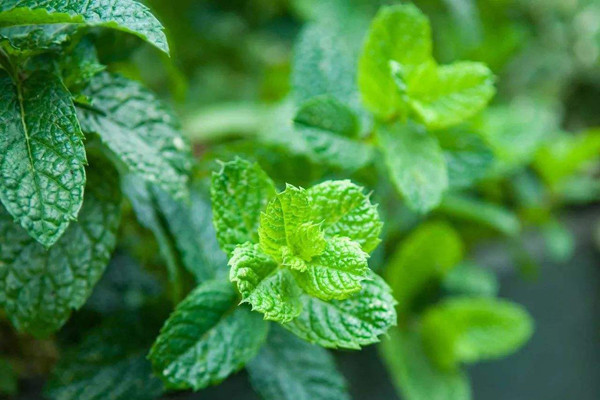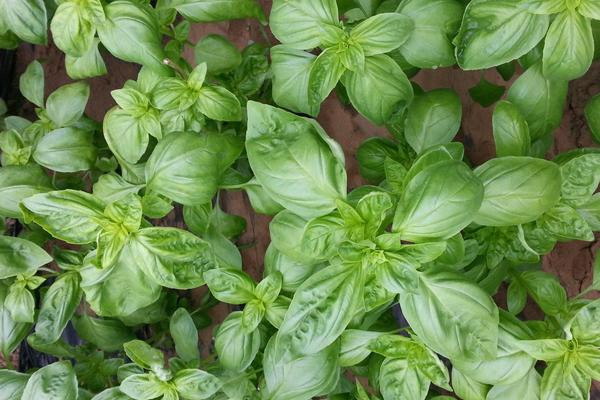藥草和香料的使用在正規歷史上都非常重要。
許多人因其藥用特性而聞名,遠在烹飪使用之前。
現代科學已表明,它們中的許多確實具有顯著的健康益處。
以下是研究支持的10種世界上最健康的草藥和香料。

1.肉桂降低血糖水準並具有強大的抗糖尿病作用
肉桂是一種流行的香料,存在於各種食譜和烘焙食品中。
它含有一種叫做肉桂醛的化合物,它負責肉桂的藥用特性。
肉桂具有強大的抗氧化活性,有助於對抗炎症,並已被證明可以降低血液中的膽固醇和甘油三脂[1-2]。
但肉桂真正閃耀的地方在於它對血糖水準的影響。
肉桂通過多種機制降低血糖,包括減緩消化道中的碳水化合物的分解和提高胰島素敏感性[3-4]。
研究表明,肉桂使糖尿病患者空腹血糖降低10-29%[5]。

2.鼠尾草可以改善大腦功能和記憶力
鼠尾草是一種與薄荷同屬的草本植物。
通常用作香料,鼠尾草在替代和傳統醫學中的使用歷史也很長。
它在中世紀以其治療特性而享有盛譽,甚至被用來幫助預防瘟疫。
研究表明,鼠尾草能夠改善大腦功能和記憶力,尤其是在阿爾茲海默病患者中。
阿爾茲海默病伴隨著乙醯膽鹼水準的下降(乙醯膽鹼是大腦中的一種化學信使),鼠尾草抑制乙醯膽鹼的分解[6]。

3.薄荷可緩解腸易激綜合征(IBS)疼痛病減少噁心
薄荷在民間醫學和芳香療法中的使用歷史悠久。
與許多草藥情況一樣,油性成分包含對健康產生影響的物質。
研究表明,薄荷油可以改善腸易激綜合症或疼痛管理[7-8]。
它通過放鬆結腸中的平滑肌起作用,從而減輕排便時的疼痛。還有助於減少腹脹[9]。
研究表明,芳香療法中的薄荷可以幫助對抗噁心。

4.薑黃含有薑黃素,是強大抗炎物質
薑黃是薑黃的根莖,是一種美味的橙黃色香料。
它含有多種具有藥用特性的化合物,其中最重要的是薑黃素[10]。
薑黃素是一種非常強大的抗氧化劑,有助於對抗氧化損傷並增強人體自身的抗氧化酶[11-12]。
抗氧化損傷被認為是衰老和許多疾病背後的關鍵因素之一。
另外薑黃還具有很強的抗炎作用,達到與某些抗炎藥的效果的程度[13]。
研究表明,它可以改善大腦功能,對抗阿爾茲海默症,降低心臟病和癌症的風險,以及緩解關節炎等[14-16]。

5.聖羅勒有助於抵抗感染和增強免疫力
不要與普通羅勒或泰國羅勒混淆,聖羅勒在印度被認為是一種神聖的草藥。
研究表明,聖羅勒可以抑制一系列細菌、酵母菌的生長[17]。
此外,聖羅勒可以通過血液中的某些免疫細胞來增強免疫系統的功能[18]。
聖羅勒還與降低餐前和餐後血糖水準有關,以及治療焦慮和憂鬱症[19]。
6.辣椒含有辣椒素,有助於減少食欲
卡宴辣椒是一種用於準備辛辣菜肴的辣椒。
其中的活性成分為辣椒素,在許多研究中已被證明可以降低食欲並增加脂肪燃燒[20-22]。
研究發現,在膳食中加入1克紅辣椒降低不經常吃辣椒的人的食欲的人的食欲,並增加脂肪燃燒[23]。
還有一些研究發現,辣椒素可以對抗某些形式的癌症,包括肺癌、肝癌和前列腺癌[24-25]。
7.生薑可以治療噁心並具有抗炎特性
薑是一種流行的香料,用於許多形式的替代醫學。
研究表明,1克或更多的生薑可以治療噁心。包括孕吐、暈船、化療等引起的噁心[26]。
此外,生薑還具有很強的抗炎特性,可以幫助緩解疼痛[27]。
其他研究發現,薑、肉桂、乳香和芝麻油的混合物可以減輕骨關節的疼痛和僵硬。它們有與阿司匹林或布洛芬治療相似的效果[28]。

8.葫蘆巴改善血糖
葫蘆巴常用于阿育吠陀,特別是用於增強性欲和陽剛之氣。
葫蘆巴對血糖有益,它含有植物蛋白4-羥基異亮氨酸,可以提高胰島素的功能[29]。
l4-羥基異亮氨酸是一種源自葫蘆巴的非典型支鏈氨基酸,是該植物對葡萄糖和脂質代謝產生影響的原因。
l4-羥基異亮氨酸通過胰島素的直接作用刺激葡萄糖依賴性胰島素分泌。
l除了刺激胰島素分泌外,4-羥基異亮氨酸還通過啟動與胰島素受體底物相關的磷酸肌醇3(PI3)激酶活性降低肌肉和/或肝臟的胰島素抵抗。
許多研究表明,每天至少1克葫蘆巴提取物可以降低血糖水準,尤其是在糖尿病患者中[30]。

9.迷迭香有助於預防過敏和鼻塞
迷迭香中的活性成分為迷迭香酸。
這種物質已被證明可以抑制過敏反應和鼻塞。
在一項對29人進行的研究中,50和200毫克劑量的迷迭香酸被證明可以抑制過敏症狀[31]。

10.大蒜可以抗病毒和改善心臟健康
大蒜的主要用途是用於藥用價值。
其含有一種叫做大蒜素的化合物——這也是大蒜獨特氣味的原因。
大蒜補充劑以對抗疾病而聞名,包括普通感冒[32]。
如果你經常感冒,那麼在你的飲食中加入大蒜可能會有一定的幫助。
對於膽固醇高的人,大蒜補充劑可將膽固醇或低密度脂蛋白膽固醇降低約10-15%[33]。

參考資料
[1] Shan B, Cai YZ, Sun M, Corke H. Antioxidant capacity of 26 spice extracts and characterization of their phenolic constituents. J Agric Food Chem. 2005 Oct 5;53(20):7749-59.
[2] Khan A, Safdar M, Ali Khan MM, Khattak KN, Anderson RA. Cinnamon improves glucose and lipids of people with type 2 diabetes. Diabetes Care. 2003 Dec;26(12):3215-8.
[3] Adisakwattana S, Lerdsuwankij O, Poputtachai U, Minipun A, Suparpprom C. Inhibitory activity of cinnamon bark species and their combination effect with acarbose against intestinal α-glucosidase and pancreatic α-amylase. Plant Foods Hum Nutr. 2011 Jun;66(2):143-8.
[4] Anderson RA. Chromium and polyphenols from cinnamon improve insulin sensitivity. Proc Nutr Soc. 2008 Feb;67(1):48-53.
[5] Kirkham S, Akilen R, Sharma S, Tsiami A. The potential of cinnamon to reduce blood glucose levels in patients with type 2 diabetes and insulin resistance. Diabetes Obes Metab. 2009 Dec;11(12):1100-13.
[6] Perry NS, Bollen C, Perry EK, Ballard C. Salvia for dementia therapy: review of pharmacological activity and pilot tolerability clinical trial. Pharmacol Biochem Behav. 2003 Jun;75(3):651-9.
[7] Longstreth GF, Thompson WG, Chey WD, Houghton LA, Mearin F, Spiller RC. Functional bowel disorders.Gastroenterology2006;130:1480-91.
[8] Alam MS, Roy PK, Miah AR, Mollick SH, Khan MR, Mahmud MC, Khatun S. Efficacy of Peppermint oil in diarrhea predominant IBS – a double blind randomized placebo – controlled study. Mymensingh Med J. 2013 Jan;22(1):27-30. PMID: 23416804.
[9] Khanna R, MacDonald JK, Levesque BG. Peppermint oil for the treatment of irritable bowel syndrome: a systematic review and meta-analysis. J Clin Gastroenterol. 2014 Jul;48(6):505-12.
[10] Chainani-Wu N. Safety and anti-inflammatory activity of curcumin: A component of turmeric (Curcuma longa)J Altern Complement Med.2003;9:61–8.
[11] Menon VP, Sudheer AR. Antioxidant and anti-inflammatory properties of curcumin. Adv Exp Med Biol. 2007;595:105-25.
[12] Biswas SK, McClure D, Jimenez LA, Megson IL, Rahman I. Curcumin induces glutathione biosynthesis and inhibits NF-kappaB activation and interleukin-8 release in alveolar epithelial cells: mechanism of free radical scavenging activity. Antioxid Redox Signal. 2005 Jan-Feb;7(1-2):32-41.
[13] Jurenka JS. Anti-inflammatory properties of curcumin, a major constituent of Curcuma longa: a review of preclinical and clinical research. Altern Med Rev. 2009 Jun;14(2):141-53. Erratum in: Altern Med Rev. 2009 Sep;14(3):277. PMID: 19594223.
[14] Zhang L, Fiala M, Cashman J, Sayre J, Espinosa A, Mahanian M, et al. Curcuminoids enhance amyloid -beta uptake by macrophages of Alzheimer’s disease patients.J Alzheimers Dis.2006;10:1–7.
[15] Wongcharoen W, Phrommintikul A. The protective role of curcumin in cardiovascular diseases. Int J Cardiol. 2009 Apr 3;133(2):145-51. doi: 10.1016/j.ijcard.2009.01.073. Epub 2009 Feb 23. PMID: 19233493.
[16] Aggarwal BB, Kumar A, Bharti AC. Anticancer potential of curcumin: preclinical and clinical studies. Anticancer Res. 2003 Jan-Feb;23(1A):363-98. PMID: 12680238.
[17] Opalchenova G, Obreshkova D. Comparative studies on the activity of basil–an essential oil from Ocimum basilicum L.–against multidrug resistant clinical isolates of the genera Staphylococcus, Enterococcus and Pseudomonas by using different test methods. J Microbiol Methods. 2003 Jul;54(1):105-10.
[18] Mondal S, Varma S, Bamola VD, Naik SN, Mirdha BR, Padhi MM, Mehta N, Mahapatra SC. Double-blinded randomized controlled trial for immunomodulatory effects of Tulsi (Ocimum sanctum Linn.) leaf extract on healthy volunteers. J Ethnopharmacol. 2011 Jul 14;136(3):452-6.ts with noninsulin-dependent diabetes mellitus. Int J Clin Pharmacol Ther. 1996 Sep;34(9):406-9. PMID: 8880292.
[20] Yoneshiro T, Aita S, Kawai Y, Iwanaga T, Saito M. Nonpungent capsaicin analogs (capsinoids) increase energy expenditure through the activation of brown adipose tissue in humans. Am J Clin Nutr. 2012 Apr;95(4):845-50.
[21] Westerterp-Plantenga MS, Smeets A, Lejeune MP. Sensory and gastrointestinal satiety effects of capsaicin on food intake. Int J Obes (Lond). 2005 Jun;29(6):682-8.
[22] Leung FW. Capsaicin as an anti-obesity drug. Prog Drug Res. 2014;68:171-9.
[23] Yoshioka M, St-Pierre S, Suzuki M, Tremblay A. Effects of red pepper added to high-fat and high-carbohydrate meals on energy metabolism and substrate utilization in Japanese women.Brit J Nutr.1998;80:503–10.
[24] Jang JJ, Kim SH, Yun TK. Inhibitory effect of capsaicin on mouse lung tumor development. In Vivo. 1989 Jan-Feb;3(1):49-53. PMID: 2519832.
[25] Mori A, Lehmann S, O’Kelly J, Kumagai T, Desmond JC, Pervan M, McBride WH, Kizaki M, Koeffler HP. Capsaicin, a component of red peppers, inhibits the growth of androgen-independent, p53 mutant prostate cancer cells. Cancer Res. 2006 Mar 15;66(6):3222-9.
[26] Marcus DM, Snodgrass WR. Effectiveness and safety of ginger in the treatment of pregnancy-induced nausea and vomiting. Obstet Gynecol. 2005 Sep;106(3):640; author reply 640-1.
[27]Black CD, Herring MP, Hurley DJ, O’Connor PJ. Ginger (Zingiber officinale) reduces muscle pain caused by eccentric exercise. J Pain. 2010 Sep;11(9):894-903.
[28] Zahmatkash M, Vafaeenasab MR. Comparing analgesic effects of a topical herbal mixed medicine with salicylate in patients with knee osteoarthritis. Pak J Biol Sci. 2011 Jul 1;14(13):715-9.
[29] Jetté L, Harvey L, Eugeni K, Levens N. 4-Hydroxyisoleucine: a plant-derived treatment for metabolic syndrome. Curr Opin Investig Drugs. 2009 Apr;10(4):353-8. PMID: 19337956.
[30] Sharma RD, Raghuram TC, Rao NS. Effect of fenugreek seeds on blood glucose and serum lipids in type I diabetes. Eur J Clin Nutr. 1990 Apr;44(4):301-6. PMID: 2194788.
[31] Takano H, Osakabe N, Sanbongi C, Yanagisawa R, Inoue K, Yasuda A, Natsume M, Baba S, Ichiishi E, Yoshikawa T. Extract of Perilla frutescens enriched for rosmarinic acid, a polyphenolic phytochemical, inhibits seasonal allergic rhinoconjunctivitis in humans. Exp Biol Med (Maywood). 2004 Mar;229(3):247-54.
[32] Josling P. Preventing the common cold with a garlic supplement: a double-blind, placebo-controlled survey. Adv Ther. 2001 Jul-Aug;18(4):189-93.
[33] Silagy C, Neil A. Garlic as a lipid lowering agent–a meta-analysis. J R Coll Physicians Lond. 1994 Jan-Feb;28(1):39-45. PMID: 8169881; PMCID: PMC5400934.

